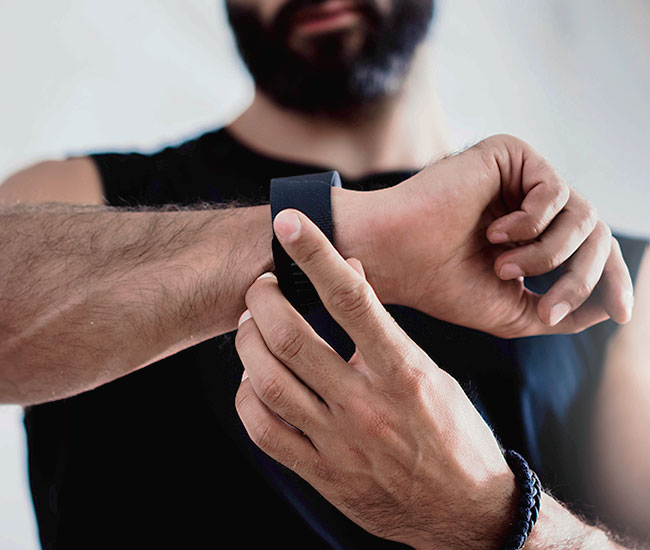How to maintain the quality of your Mugnier® watch and attend to all its needs.
Exposing your watch to high temperatures, such as placing it on the dashboard of your vehicle or submerging it in a hot tub, may cause the watch to malfunction, shorten its battery life, or damage its internal components. Leaving the watch in extreme cold temperatures may cause irregular timekeeping.
Do not expose quartz watches to magnetism. If you do, it may temporarily stop operating or cause irregular timekeeping.
You should have your watch checked once a year to ensure its water resistance abilities. Condensation inside your watch is an indication that its water resistance ability has been affected. To ensure that it maintains its water resistance, ensure that the crown is always pushed against the case, at position 1.
For maximum performance, wipe your watch regularly with a clean, soft cloth. Stains, water spots, and dirt that accumulate on the case or crystal glass may cause premature wear and tear. If you use your water-resistant watch in the shower, chlorinated water or salt water may adhere to the glass cover. We recommend rinsing it with fresh water and drying it thoroughly after. It is not advisable to use watches with leather straps in the shower, while swimming, or diving. The leather straps will get damaged when overexposed to the elements during these activities.
If your watch has a film and /or adhesive protector on the back of its case, be sure to remove it before using the watch. Do not expose the watch to solvents, mercury, cosmetic sprays, detergents, adhesives, or paint.

CRYSTAL GLASS CARE
- This watch has a scratch-resistant sapphire crystal glass but that does not mean that you should toss your watch on top of the dresser or into a drawer. It is better to store or wrap it in a soft cloth before placing it down.
- Replace broken or scratched crystal glasses immediately. Even a hairline crack can bring dust or moisture into the mechanism, affecting the accuracy.

LEATHER STRAP CARE
- Straps that are made of natural and genuine leather will gradually deteriorate with constant exposure to perspiration. If not cleaned, perspiration will wash out the natural oils and cause the leather to dry out. Any moisture should be blotted with a soft cloth or paper towel and the strap should be allowed to dry naturally.
- Salt residue and soil can be removed from leather straps by cleaning it with a damp soft cloth.
- Wear the strap slightly loose, with an allowance of one finger space between the wrist and strap. This invites circulation and allows any moisture to evaporate.
